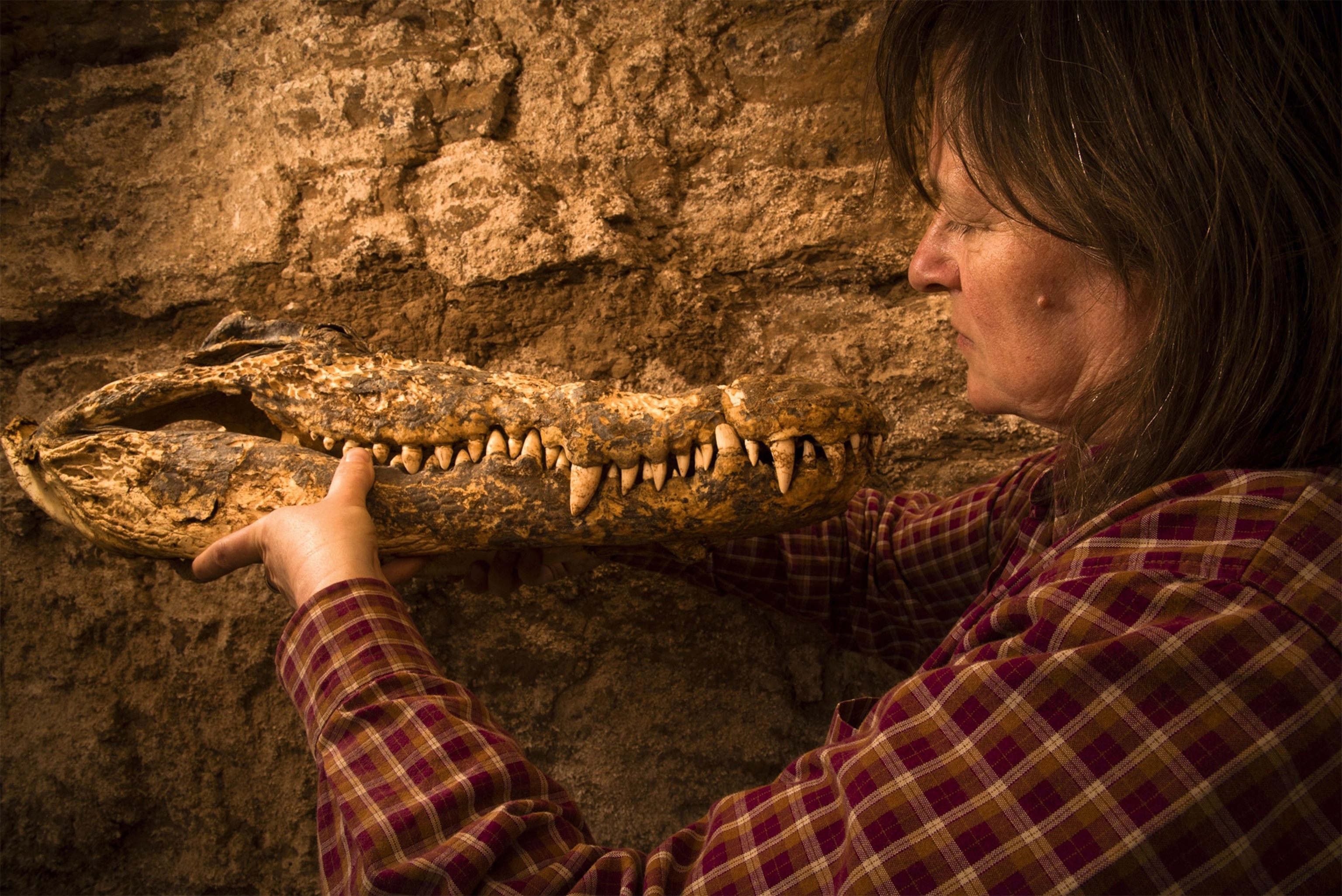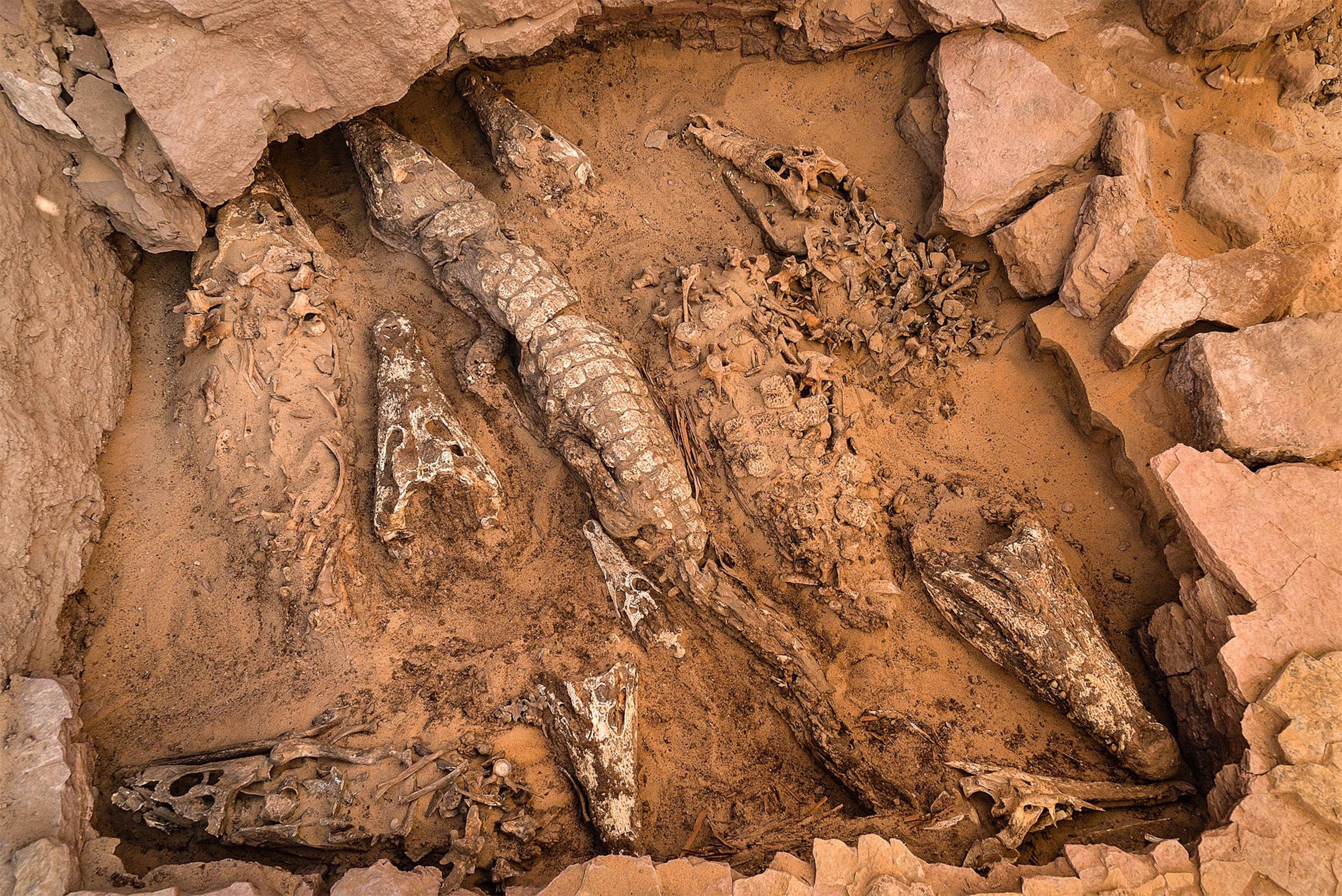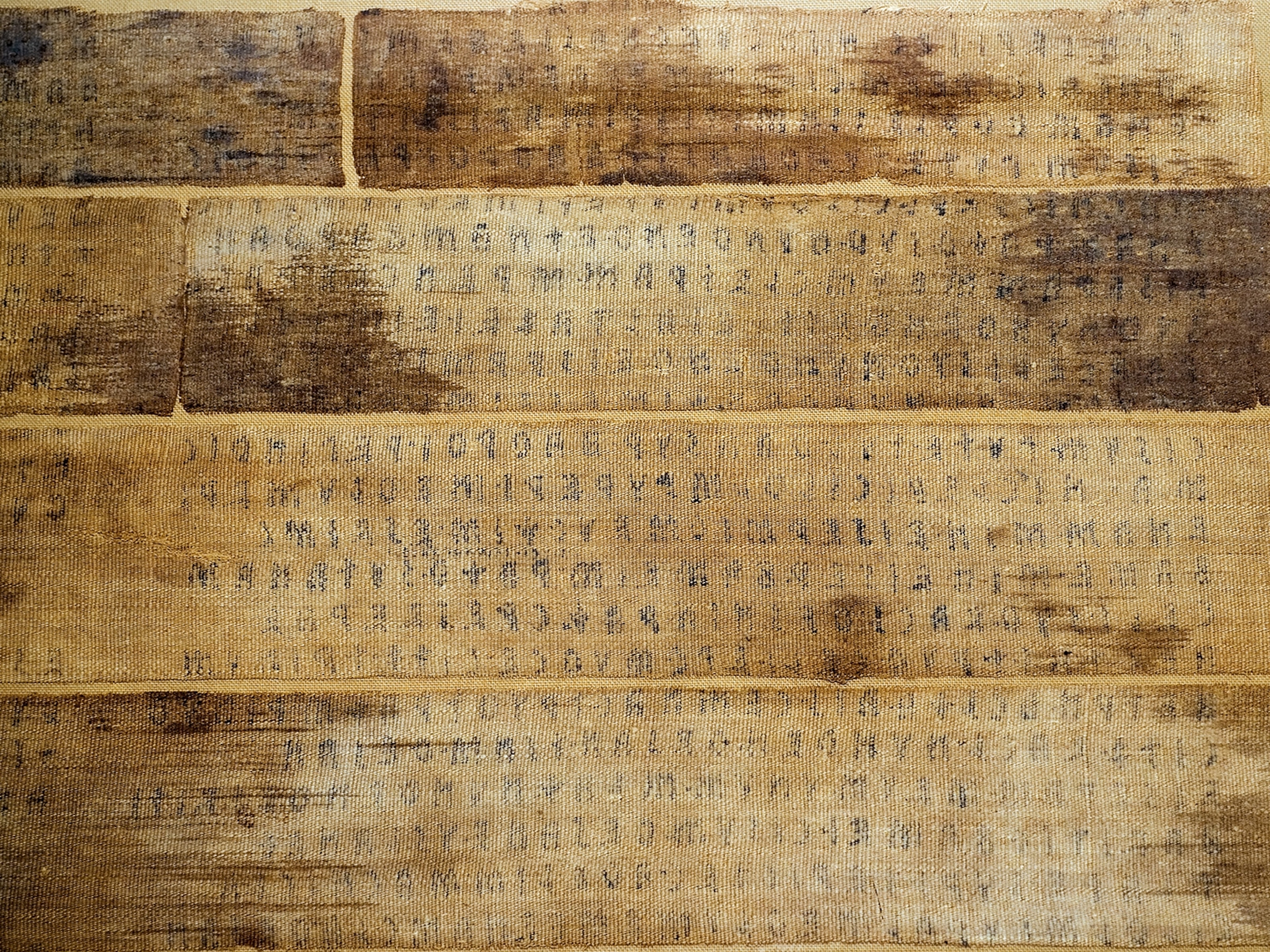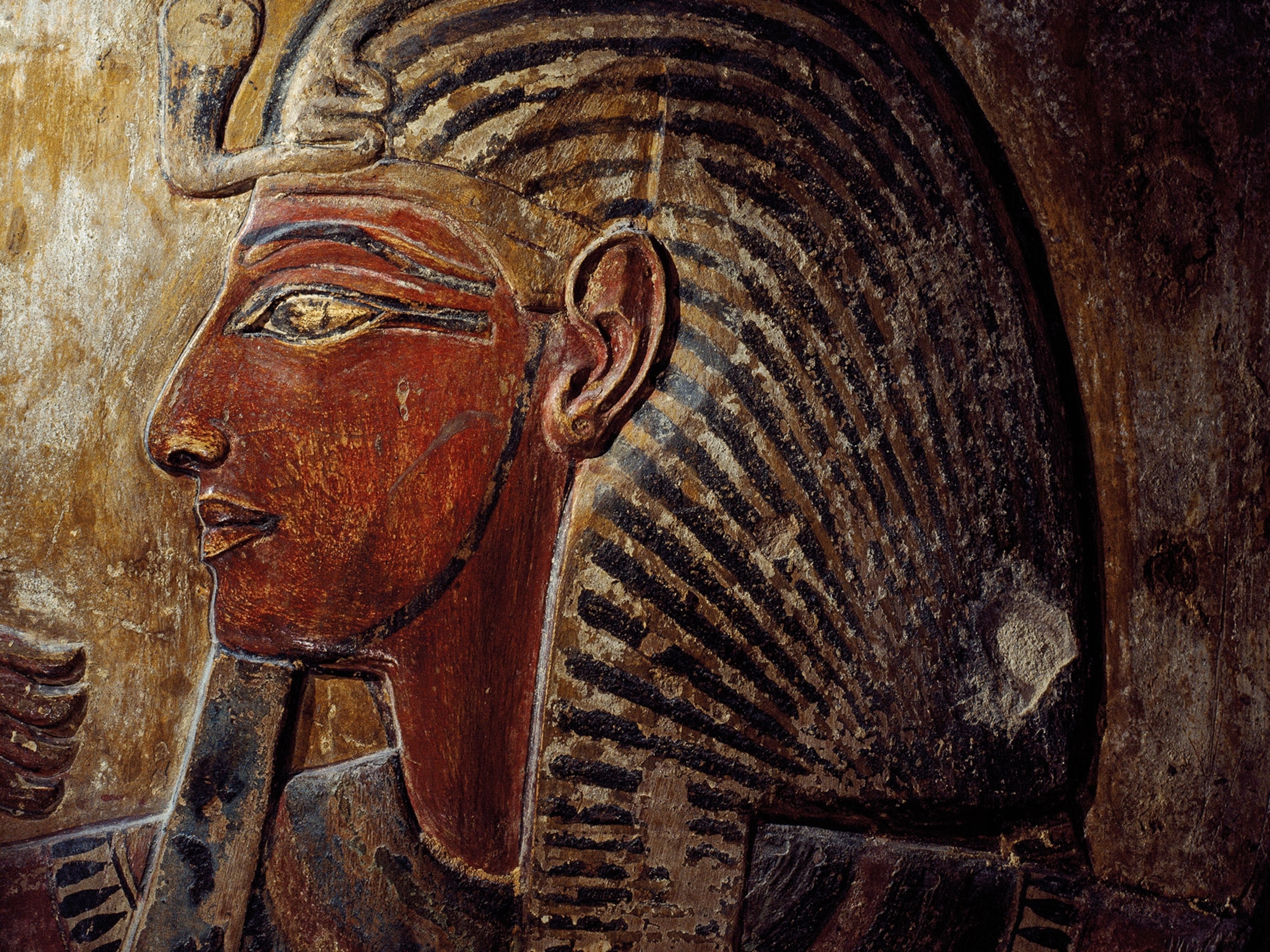These crocodile mummies are unraveling a mystery
After discovering a trove of mummified crocodiles in Egypt, researchers noticed something unexpected—these reptiles had an unusual embalmment.

In 2019, while excavating the necropolis of Qubbet el Hawa, across the Nile from Aswan in southern Egypt, Belgian and Spanish archaeologists unearthed a trove of mummified crocodiles: five almost complete skeletons, plus five heads.
Although crocodiles are often found in Egyptian tombs, it is rare to discover 10. The findings, published in the journal PLOS One, shed light on the embalming technique used and even how the animals might have died.
Revered and feared

Sacrificed to Sobek
Animals in ancient Egypt were mummified for use as votive offerings. The objects often took the form of the god being offered to—in this case, the croc-headed god Sobek.
(From cats to crocodiles, ancient Egyptians worshipped many animal gods.)
Linen that once wrapped the mummies had long been consumed by insects. Examining the remains, team members were surprised they did not find traces of resin used in conventional mummification. The animals’ internal organs had not been removed either, suggesting the bodies had been laid in sandpits, where they naturally mummified in the dry desert heat.
In high demand, the crocodiles had likely been hunted in the fifth century B.C. Although the team failed to find evidence of any trauma on the specimens, traces of rope suggest the reptiles perished from a simple, if cruel, method: tied up and left in the hot sun, until they died of dehydration.






